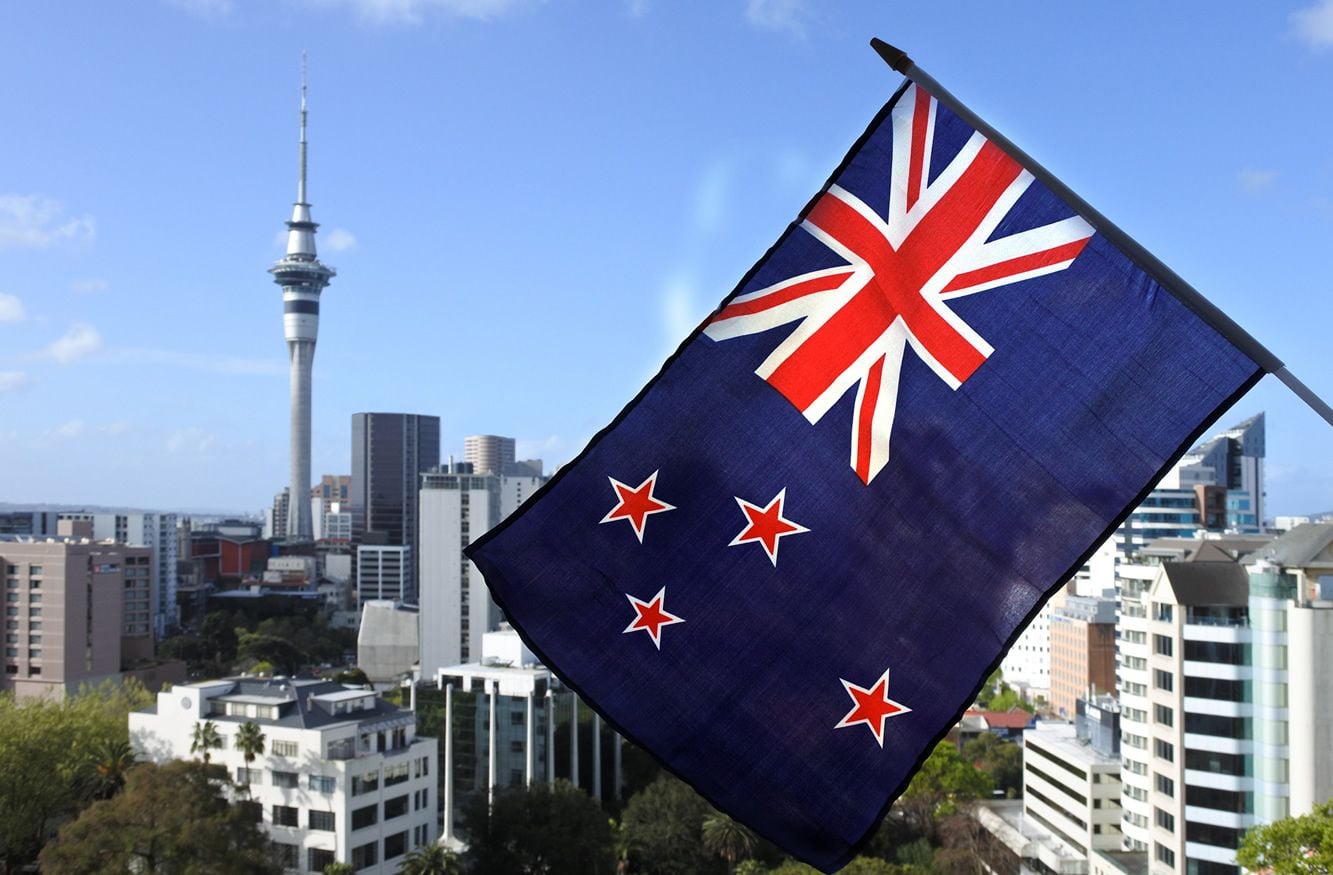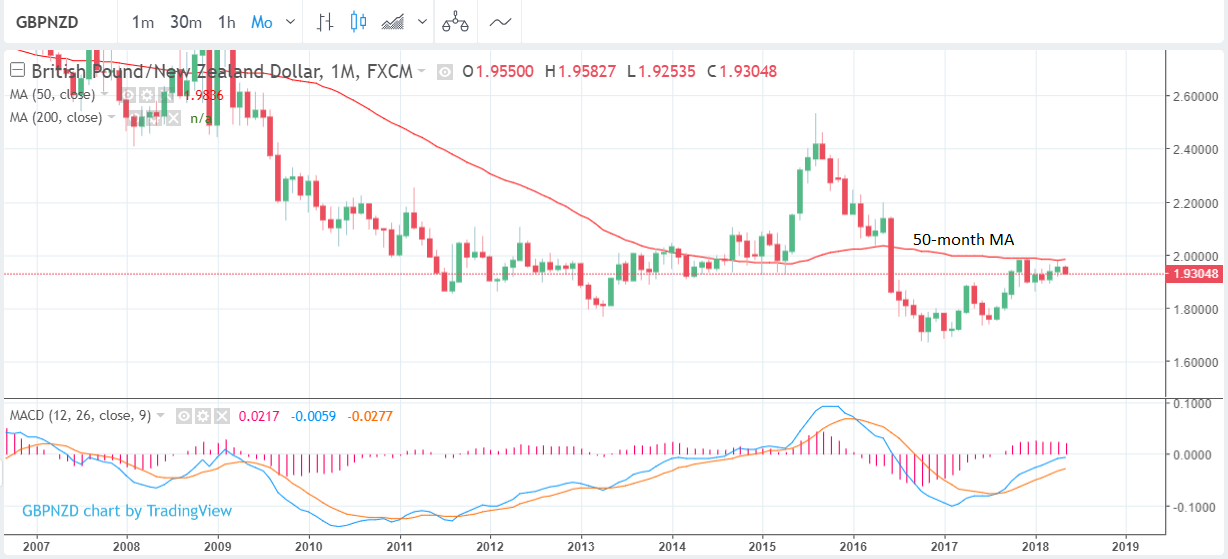Pound-to-New Zealand Dollar Rate Forecast for the Week Ahead: Sterling Capped
- GBP/NZD continues trading in a broad range in the 1.90s as the new trading week begins
- The main event for the Pound is the policy meeting of the Bank of England
- For the New Zealand Dollar, the main event is the meeting of the Reserve Bank of New Zealand

© Rafael Ben-Ari, Adobe Stock
One Pound buys 1.9323 New Zealand Dollars at the time of writing, down from the current month's high of 1.9574 with the GBP/NZD pair trading more-or-less in a sideways-orientated range between highs in the 1.98s and lows towards 1.92.
Concerning the outlook for the week ahead, both currencies' central banks will have their policy meetings on Thursday, May 10, and these could be highly influential events for the exchange rate.
If either of the central banks starts talking about raising interest rates it will drive up the value of their respective units because higher interest rates attract greater inflows of foreign capital which boosts demand for the local currency.
From a technical perspective, our studies note significant upside for Sterling is likely to be difficult with 1.98 looking to be a notable cap owing to the 50-month moving average (MA) being situated at 1.9836.
As can be seen from the picture of the monthly chart above, the 50-month MA has successfully capped the highs and the exchange rate has been unable to break above it.
Uptrending prices often stall, pull-back or even sometimes reverse at the level of large moving averages like the 50-month, because they are used by large speculators, fund managers and retail traders alike as a decision-making tool, and are therefore subject to greater-than-average levels of liquidity.
The pair may even reverse the trend from the 50-month and start falling.
Another obstacle to the further upside is the 2.000 exchange rate level which is a major round-number and therefore subject to increased amounts of buying and selling in its vicinity. This is because it is more likely to be singled out as a level at which traders decide to take profit.
Previously we thought the daily chart of GBP/NZD was showing a breakout from a triangle pattern (see below), however, we are not certain now that the pattern was actually a bona fide triangle as one would have expected a more volatile breakout if that had been the case, and the pair continues moving within the old range encompassed by the triangle.
The longer-term trend is technically still bullish but because of the 50-month MA capping gains above 1.98 and the range-bound daily activity we have decided once again this week to desist from making a forecast for the pair as both further upside or downside is possible.
News and Events to Watch for the New Zealand Dollar
The main event in the week ahead for the New Zealand Dollar is the Reserve Bank of New Zealand (RBNZ) interest rate meeting on Wednesday, May 10, at 22.00 GMT.
The rate meeting is significant for the Kiwi because interest rates are important fundamental drivers of currencies and if the RBNZ raises rates it will probably lead to a stronger Kiwi.
The consensus expectation is that the RBNZ will leave interest rates unchanged at 1.75%. The New Zealand Dollar, however, could still be impacted by the tone of the meeting and whether the accompanying statement or the comments of the new governor afterward foretell of future policy direction.
"Will Orr be pragmatic and say the economic outlook is bright (our view) or lean towards caution and downplay highly expansionary fiscal policy and emphasise low inflation?" says Canadian investment bank TD Securities.
Other data in the coming week includes a further speech by Governor Orr on Thursday at 2.10 and Business PMI at 23.30.
Data and Events to Watch for the Pound
The main event in the week ahead for the Pound is the Bank of England (BOE) interest rate meeting on Thursday, May 10 at 12.00 GMT.
Whilst previously expectations had been for the BOE to raise interest rates by 0.25% at the meeting, data showing a slowdown in growth and commentary from the governor of the BOE, Mark Carney, which brought into question the necessity of a May hike, have dampened expectations more recently.
Official market expectations now stand at roughly 20% for a hike, and Sterling has decline alongside these fading expectations. A recent survey of economists held by Bloomberg found that none of them now expect a rate hike on Thursday.
Therefore - we would expect a substantial boost was the Bank to defy expectations and raise interest rates. In theory, the Pound could retrace much of the losses witnessed over recent weeks.
The BOE's inflation report is also out at the same time, and will show the Bank's latest forecasts for the economy and can provide insight into how the Bank may formulate policy in the future.
If it expects inflation and growth to rise, for example, that could be bullish for Sterling as it will imply more rate hikes, and higher interest rates are usually positive for a currency.
We would expect guidance to be important for Sterling - what does Carney's assessment of the recent growth slowdown, is it temporary or does he believe it to be more entrenched? Will the BOE confirm further interest rate rises are indeed necessary over coming weeks? These are where we see the big story for Sterling lying.
A more upbeat assessment of the economy and the outlook could certainly turn sentiment towards Sterling for the better, while a downbeat tone could allow the recent sell-off to extend.
"We expect clear evidence of a sustained rebound in GDP growth to pave the way for next rate hike to in November 2018, followed by two more hikes in 2019," says a preview note from Berenberg.
"Our baseline case is that next week will mark a three-month postponement to rate increases, with the next 25bp hike occurring in August," says Phillip Shaw, an economist from Investec.
Data releases are second-tier in nature. On Tuesday, May 08 at 8.30 large mortgage lender Halifax releases its house price index, which is forecast to show a decline of -0.3% month-on-month in April.
Wednesday sees the release of the British Retail Consortium's (BRC) Sales Monitor, which is forecast to show a -0.7% fall in April compared to April in 2017.
Thursday, May 10 sees the release of the Royal Institute of Chartered Surveyors (RICS) House Price balance just after midnight, which is expected to show a -1.0% fall in April.
Also out on Thursday is Industrial and Manufacturing Production at 9.30 with the former expected to show a 0.1% rise mom, and the latter a -0.2% decline.
Finally, the UK trade balance is out on Thursday and is forecast to show the trade deficit widening to -11.40bn in March.
Get up to 5% more foreign exchange by using a specialist provider to get closer to the real market rate and avoid the gaping spreads charged by your bank when providing currency. Learn more here.






